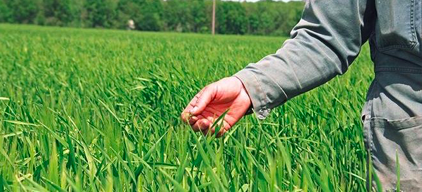
It is complex to truly define the terms “growing well” and “eating well”. Everyone will have their own opinion on the matter because of their distinctive know-how as well as their habits.
Nevertheless, in this new series of articles, we will try to highlight the different ways to “grow well to eat well”. Because eating well also starts in the fields…
What is good cultivation?
The dictionary points out that the word “cultivate” has, in fact, several meanings.
Its primary meaning “to work the land in order to make it fertile and to be able to exploit it” is the best known. However, to cultivate can be a synonym of “to practice, to devote, to develop, to look after and to maintain“. It should be noted that this second definition is far from the representation that we have of the agriculture that shapes our landscapes.

But in the end, isn’t “good cultivation” above all a philosophical approach? It is a matter of thinking first of the well-being of the environment and the ecosystems that surround us in order to ensure the well-being of the consumer.
We can then define a good crop as a sustainable crop that is thought for the generations to come; it is also a self-sufficient crop that does not need chemicals, that controls its water consumption, and that allows time for the crop to develop to be finally provided with all the essential nutrients.

But while pesticide sales peaked at over 85,000 tons for France in 2018, (Source: Les Echos Planète) how is it possible to “eat well”?
How to eat well?
Also in the dictionary, the term “eating well” is defined as follows: “Eating in sufficient quantity, with the right balance of nutrients and eating high quality food“.

“Well-grown” products are naturally rich in nutrients, allowing the consumer to eat in reasonable quantities and assimilate enough nutrients to ensure the maintenance and proper metabolic and physiological functioning of an individual.
However, selecting the right products in the food aisles of your favorite stores is not as easy as it seems. In order to make the right choice, it is essential to read the labels carefully. You will find the ingredients used as well as their nutritional values. But this is not enough, you will also have to distinguish the good ingredients from the additives.
Fortunately, there have been applications like Yuka for a few years now that allow you to simply decipher a product and quickly identify the constituents that are potentially harmful to your health. The nutri-score allows to bring another information on the quality of a product but its analysis only concerns the nutritional values of a product…
Finally, if you want to control the amount of chemical inputs used to grow your salads, only organic labels will be able to guarantee you a reasoned use of authorized fertilizers and the certainty that they do not contain pesticides. But all this will be developed more precisely in an article that will be released very soon 😉.
Why are PPA the solution?
By meticulously choosing the raw materials used in our dishes, Les Petits Plats d’Arthur choose to select partners who adhere to their philosophy of “growing well to eat well”.
For example, we select some of our vegetables from local producers such as Jardins de la Neuville, which allows us to be sure that our products are free of chemicals and take into account the surrounding ecosystem.

We favor Label Rouge meats as well as “Origine France Garantie” and our recipes are all obviously Made In France.
Our quest for optimal quality naturally leads us to the next step, which is to obtain the organic label, on which we are actively working.
Guaranteeing everyone well grown products, to always eat better, that’s also what Les Petits Plats d’Arthur is all about 😉
